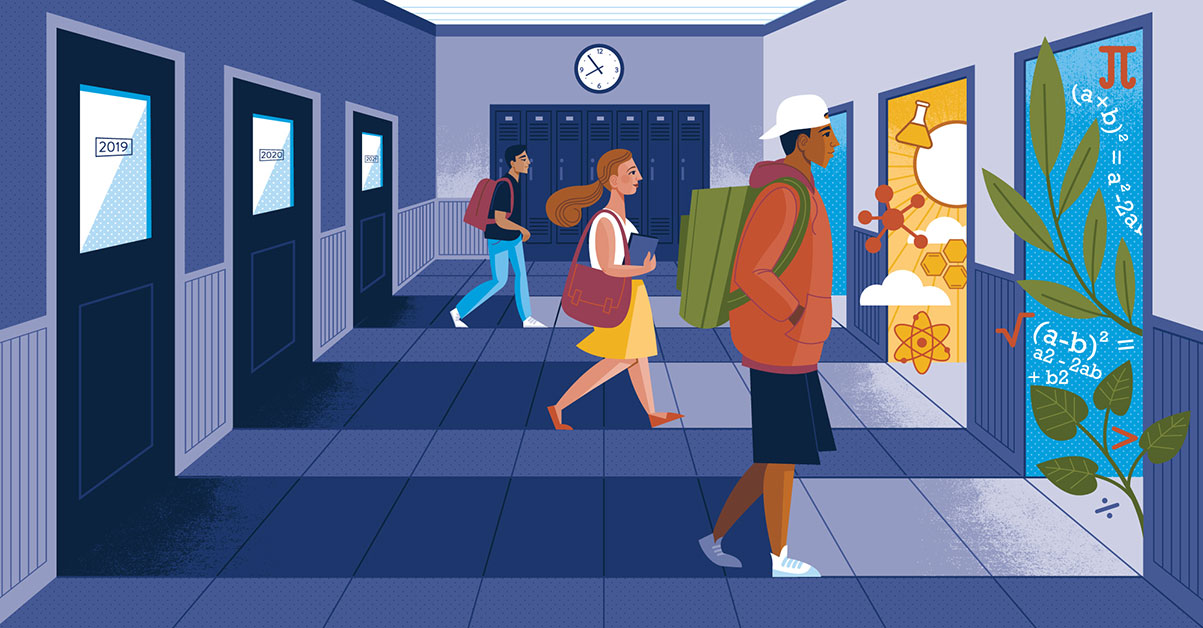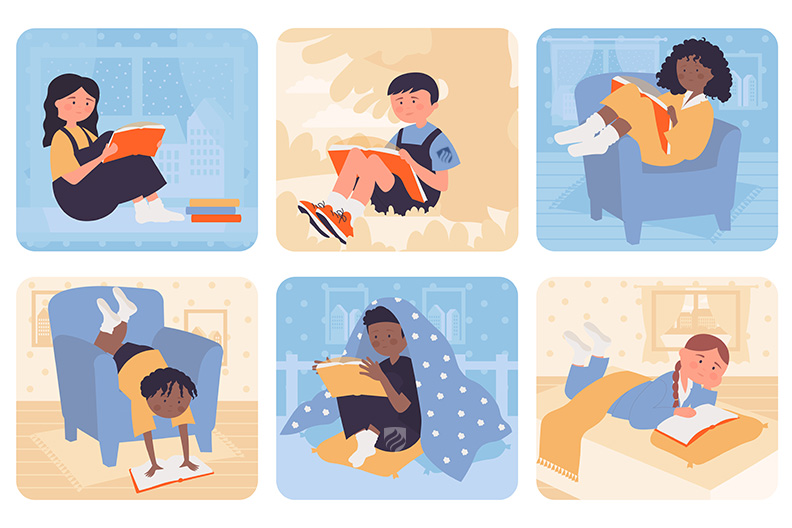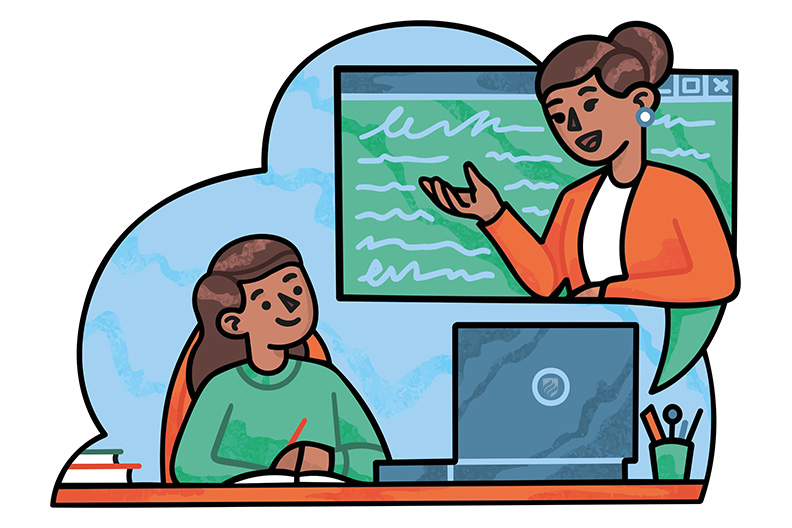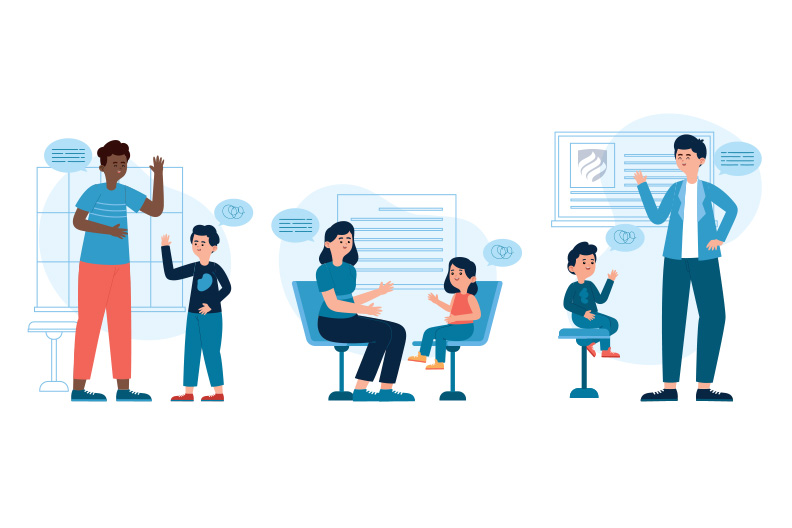Schools Can’t Just ‘Go Back to Normal’
CHALKING THE LINE | BY DEBRA MEYER | 7 MIN READ

During the pandemic, I found a new email signature quote, by Sonya Renee Taylor, and read it daily. Since then, I have received more email replies like “Love your signature quote” than ever before. It reads:
“We will not go back to normal. Normal never was. Our pre-corona existence was not normal other than we normalized greed, inequity, exhaustion, depletion, extraction, disconnection, confusion, rage, hoarding, hate, and lack. We should not long to return, my friends. We are being given the opportunity to stitch a new garment. One that fits all of humanity and nature.”
There seems to be a lot of buzz about not going back to normal as the new school year begins. And with the Delta variant reminding us that the pandemic isn’t over, “normal” seems unlikely, anyway. But the more important meaning for “not returning to normal” in our schools is that we should move forward and reimagine what school could and should be.
After all, this is a truly new and unique beginning for a school year. Let’s take advantage of it!
“Let’s not go back to normal” has many meanings, but I like Stacey Childress’ argument that going back to the way things were would be a “missed opportunity.”
One such opportunity that seems to be slipping away as the school doors open is the Brookings Institute’s recommendation about how schools could reopen stronger—and at the centers of their communities.
The anger of some about masks mandates in classrooms may make it seem that schools are being centers of more hate than community. But the majority of students, their families, and educators do want to build community—to come together—to enjoy the possibilities of a school year with social interaction, discovery, and some predictability.
So, as a college professor of future and current teachers, I wanted to reflect on what each and every classroom might offer to create new classroom experiences for every student. And then I searched for ideas to implement these new opportunities. Here’s what I discovered.
3 Ways Teachers Can Create More Responsive Classroom Communities
1. More Play!
Learning at its very best has elements of play. Students returning to school, especially in an environment of fear and uncertainty, need to experience enjoyment as a core part of their school day.
This can be done as part of daily learning. Pleasant emotions are important for learning and well-being. And having fun together develops social emotional learning skills—and games can be used to specifically develop these essential skills.
There are also many different ways to incorporate play into classroom lessons, and Edutopia was my go-to source in the following examples:
- Play as well as recess are essential for young children’s learning. More importantly, play can be brought into every classroom—preschool through college—as Sarah LaHayne describes in four simple approaches.
- Learning can be gamified through adding game elements (e.g., levels, badges) to learning activities. Or, games can simply be used to teach (e.g., video simulation games). Hubert Ham explains the difference between these approaches and links to creative examples of how teachers have applied them for all ages.
- There are two ways to approach almost any learning activity: the “normal way” or the “fun way.” Here are some of the examples teachers have shared on Edutopia for students of all ages in a variety of subject areas:
Let’s put away the worksheets and think about how much students need every opportunity to enjoy learning with each other—and have some fun while doing it.
2. Expanded Involvement
Active involvement will be needed from everyone—more ways to be involved as students, teachers, and families. This is not the 2019 notion of involvement of student participation in class. This is the 2021 idea that involvement comes in many shapes and forms.
As teachers, we have to plan for involvement, teach our students new ways to connect, and include their families and the community in this learning. To think about expanding involvement in the classroom, consider the following 3 questions:
How will you help students reconnect this school year?
How will you involve families in more meaningful ways?
Well before the pandemic (2017), renowned child psychologist James Comer and his colleague Norris Hayes wrote on Edutopia that building a Home-School Team requires a starting point, providing a wide variety of possibilities for family involvement, and improving communication.
These research-based recommendations have a deeper meaning in today’s pandemic-influenced environment as we enter a new school year that may play out in a variety of ways.
In a Forbes contributing article last May (2020), Colin Seale wrote, “Once schools eventually reopen their doors, let’s not just reach for the familiar classroom interventions that have failed to produce outcomes for decades.” Seale addressed new ways to move forward as students returned to school that involve goal-setting and collaboration with families. Check out the Family-Educator Learning Accelerator framework that he links to in the article.
How will you bring the community into the classroom and extend the classroom into the community?
One of the most meaningful ways to learn is to connect new ideas with personal experience. There are multiple ways to do this, including:
3. Ensured Equity
Students and their families, as well as teachers, will need different supports as we move forward with opportunities for a new and successful year.
Yet, after a year and a half of pandemic protocols, and with the unpredictability of the COVID virus, there is a greater need for equity in the classroom—and a move away from “one size fits all” approaches. Seales’ article on new ways to team with families addressed some of the inequities that were revealed and how they have been exacerbated during the pandemic.
So, it will be essential that every classroom teacher explicitly plan for more equitable learning opportunities (and get rid of the “normal” forms of inequity). Ensuring equity in a classroom is a teacher-led process that requires changing our assumptions, expectations, language, and actions. Here are some recommended resources to promote this process.
Get Started
- Chrishana Lloyd et al (2021): Strategies for Building More Equitable Schools in Returning to the Classroom
- Heather J. Hough (2021): COVID-19, the educational opportunity crisis, and the opportunity ahead
- Clea Simon (2021): How COVID taught America about inequity in education
Dive Deeper
- The U.S. Department of Education (2021): Education in a pandemic: The disparate impacts of COVID-19 on America’s students
- Emma Garcia and Elaine Weiss (2020): COVID-19 and student performance, equity, and U.S. education policy
- George W. Bush Presidential Center (2021): Reimagining School: Rethink the School Day and Year to Better Serve Students and Families
And Don’t Forget …
The current pandemic did not cause these inequities, it exposed them.
- Linda Darling-Hammond (2018): Kerner at 50: Educational Equity Still a Dream Deferred
- Shane Safir (2016): Equity vs. Equality: 6 Steps Toward Equity
Don’t Go Back to Normal. Seize This Moment.
Let’s acknowledge that a desire to “go back to normal” can have different meanings. Some may mean going back to life without the threat of a dangerous and unpredictable virus, while others may mean “the way things were.”
However, we have learned a lot about the biases and inequities endemic in our schools over the course of the pandemic so far. These important lessons tell us that schools should be anything but “normal” going into the new school year.
Educators should use this opportunity—even if it was born of natural chaos—to reimagine every school day and create a successful school year.
Refine Your Teaching Craft at Elmhurst
Keep up to date with the latest teaching practices while earning a master’s degree at Elmhurst University. Our M.Ed. in Teacher Leadership program is designed to make you a more effective teacher—the kind others turn to for solutions.
Learn more today. Just fill in the form below!






